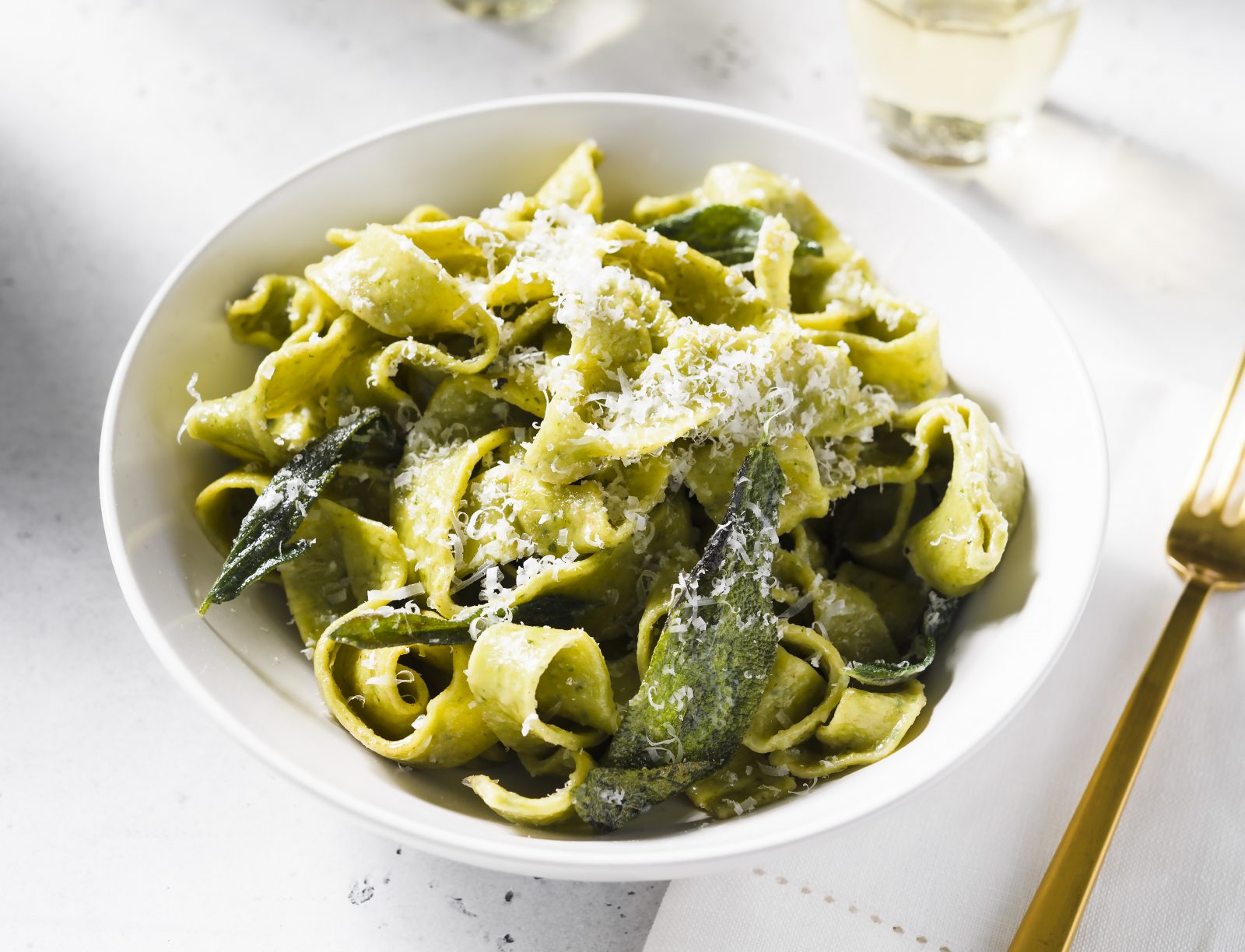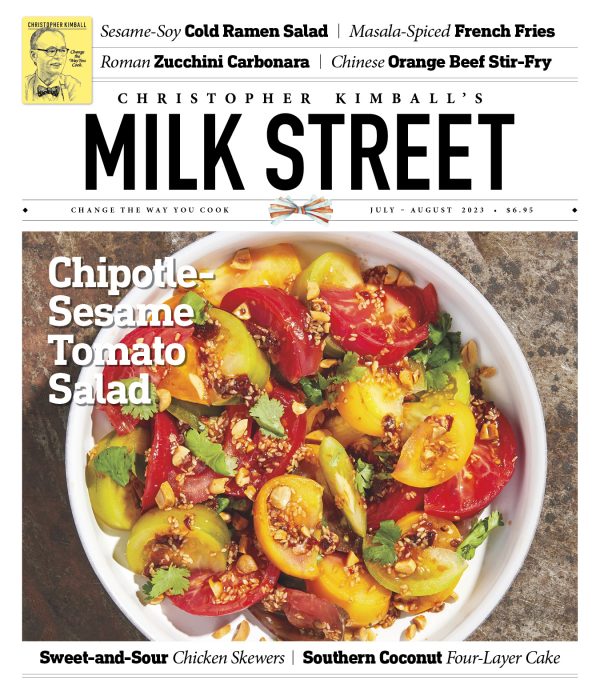Your email address is required to begin the subscription process. We will use it for customer service and other communications from Milk Street. You can unsubscribe from receiving our emails at any time.




Marika Contaldo Seguso’s Basil Tagliatelle with Butter, Sage and Parmesan
This recipe is free for a limited time. 12 WEEKS FOR $1 TO ACCESS EVERY MILK STREET RECIPE. Learn More.
This rustic, made-from-scratch pasta dish comes from Marika Contaldo Seguso, Venice-based cookbook author and cooking instructor. To create the green-flecked tagliatelle, she incorporates vibrant basil into a simple egg-based dough. Fresh pasta typically requires ample kneading, but with a food processor, the dough is ready in minutes. For serving, Contaldo Seguso infuses a generous amount of butter with fresh sage and smashed garlic cloves in a skillet, then lifts the pasta out of the boiling water and adds it directly to the skillet. Parmesan goes in at the end, along with some starchy water left over from cooking the pasta—an age-old Italian trick that yields a rich, luscious sauce that lightly clings to and coats the noodles. The tagliatelle cooks quickly, so take care to not overdo it; a few minutes should be plenty for achieving the perfect, tender yet firm al dente texture.
4 to 6
Servings
Don’t worry if you don’t have a pasta machine or attachment. You can still make the tagliatelle by rolling the quartered dough it into thin, even sheets by hand with a rolling pin, then cutting the pasta as instructed.
1 hour
plus resting
-
3
large eggs
-
2⅓
cups all-purpose flour, plus more as needed and for dusting
-
1
cup lightly packed fresh basil
-
Kosher salt and ground black pepper
-
8
tablespoons salted butter, cut into 8 pieces
-
6
fresh sage leaves
-
2
medium garlic cloves, smashed and peeled
-
1
ounce Parmesan cheese, finely grated (½ cup)
-
01In a liquid measuring cup, whisk together the eggs and 2 tablespoons water. In a food processor, combine the flour, basil and 1 teaspoon salt. Process until the basil is in fine bits and fully incorporated into the flour, about 30 seconds. With the processor running, slowly add the egg mixture. Process until the dough clears the sides of the bowl in large chunks, 1 to 2 minutes.
-
02Pinch a bit of dough with your fingers; it should be pliable, moist and hold together easily. If it sticks to your fingers, it’s too wet; add more flour, 1 tablespoon at a time, processing to combine, until no longer sticky. If the dough doesn’t hold together when pinched, it’s too dry; add 1 tablespoon water and process to combine. Transfer the dough to a lightly floured counter. Knead a few times to form a smooth ball. Wrap tightly with plastic wrap and let rest for 30 minutes.
-
03Line a rimmed baking sheet with a kitchen towel and lightly dust with flour. Unwrap the dough and, using a chef’s knife, cut it into quarters. Set 3 pieces aside and cover lightly with plastic wrap. Using your hands, shape the remaining piece into a rough 3-by-4-inch rectangle. Using a pasta machine or a stand mixer fitted with a pasta attachment, roll the dough through several times, gradually reducing the thickness setting on the machine, until it forms a long sheet of an even 1/16-inch thickness.
-
04Dust the surface of the dough sheet with flour, then accordion-fold it into thirds; set it on a cutting board. Using a chef’s knife and a decisive cutting motion (do not use a sawing action), cut the dough crosswise into ½-inch-wide strips. Unfold the tagliatelle and transfer to the prepared baking sheet, gently separating the strands. Dust with flour and toss to lightly coat; cover with another kitchen towel. Roll and cut the remaining dough in the same way.
-
05In a large pot, bring 4 quarts water to a boil. Meanwhile, in a 12-inch skillet over medium-high, combine the butter, sage and garlic; cook, stirring occasionally, until the butter is foamy. Remove from the heat and set aside.
-
06To the boiling water, add 1 tablespoon salt and the pasta, shaking off excess flour as you remove the noodles from the baking sheet. Return to a boil, stirring once or twice, and cook until al dente, 1 to 2 minutes. Return the skillet to medium-high. Using tongs, transfer the pasta from the pot, allowing water to cling to the noodles, to the skillet. Toss until coated with butter, then add the Parmesan. Continue tossing until the cheese melts, then begin adding pasta cooking water 1 tablespoon at a time, until the sauce is silky and clings to the noodles. Taste and season with salt and pepper. If desired, remove and discard the garlic and sage before serving.






